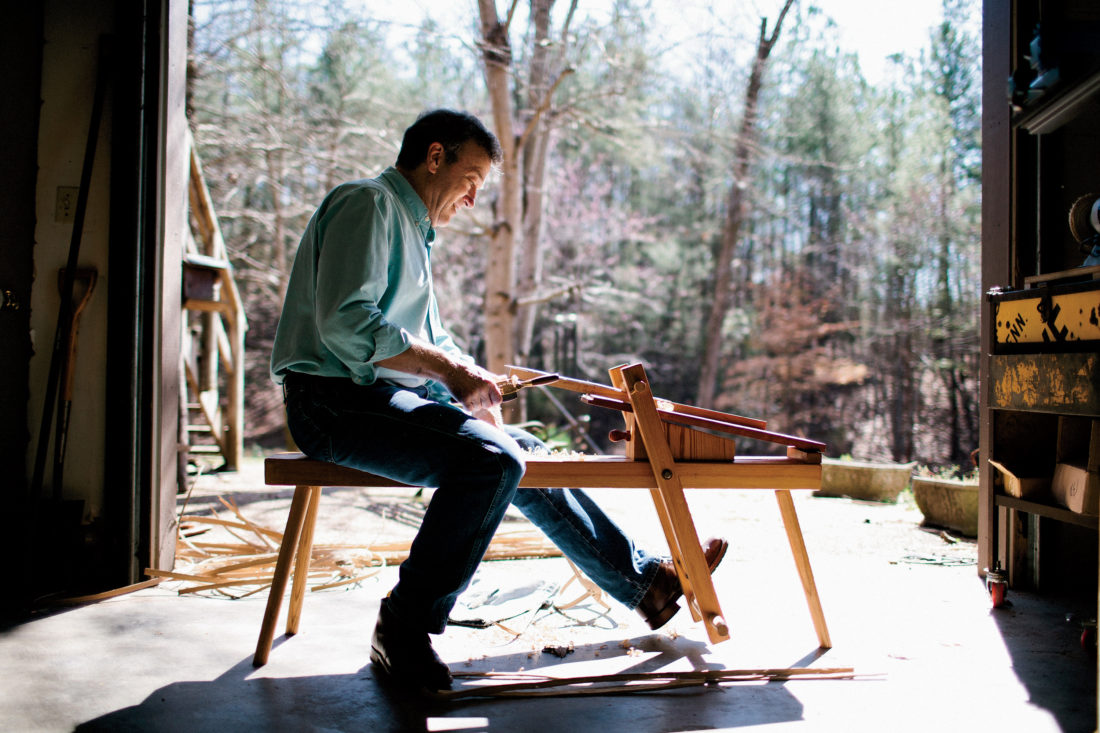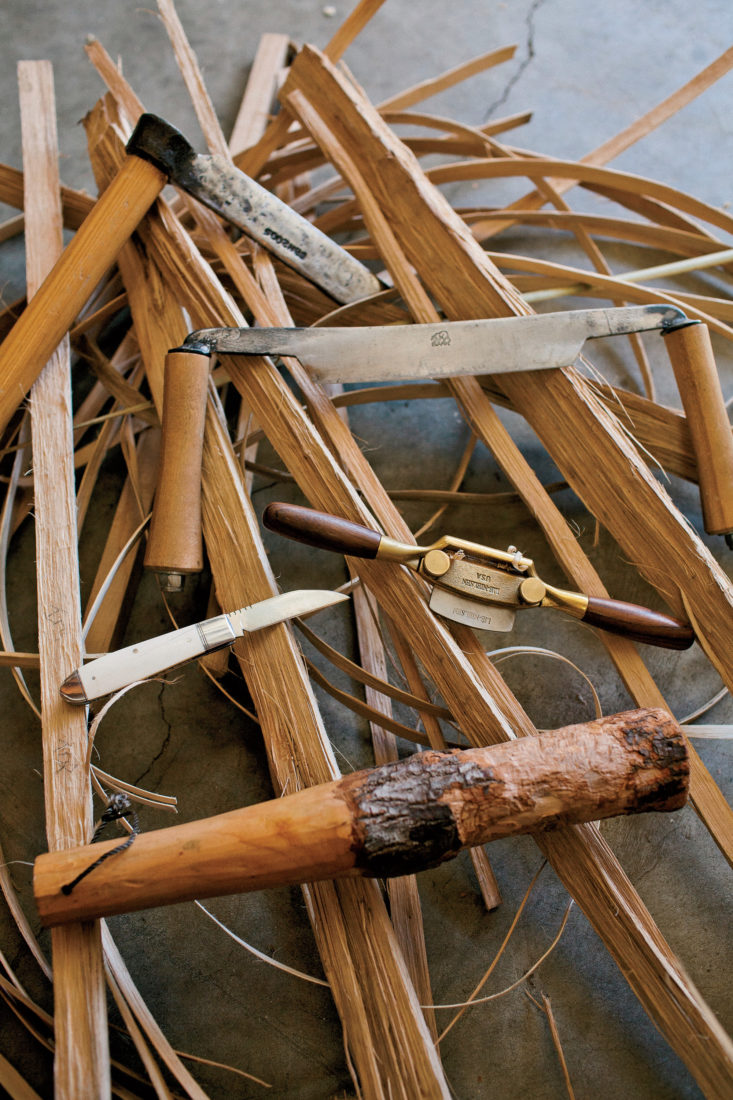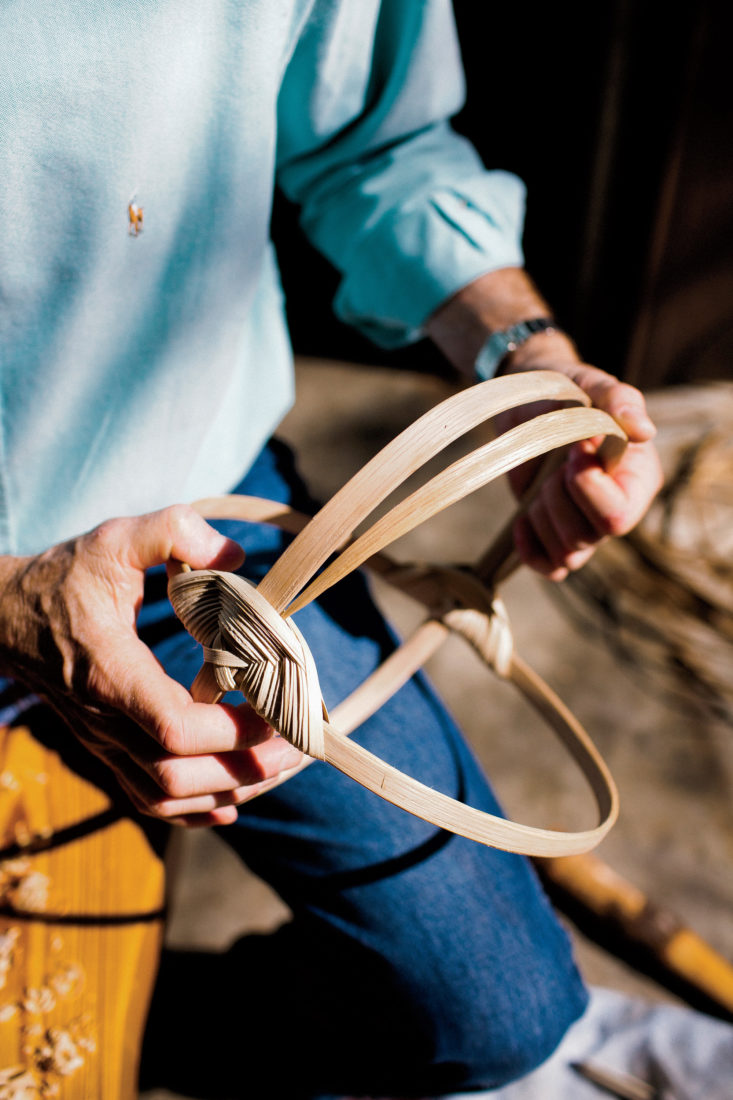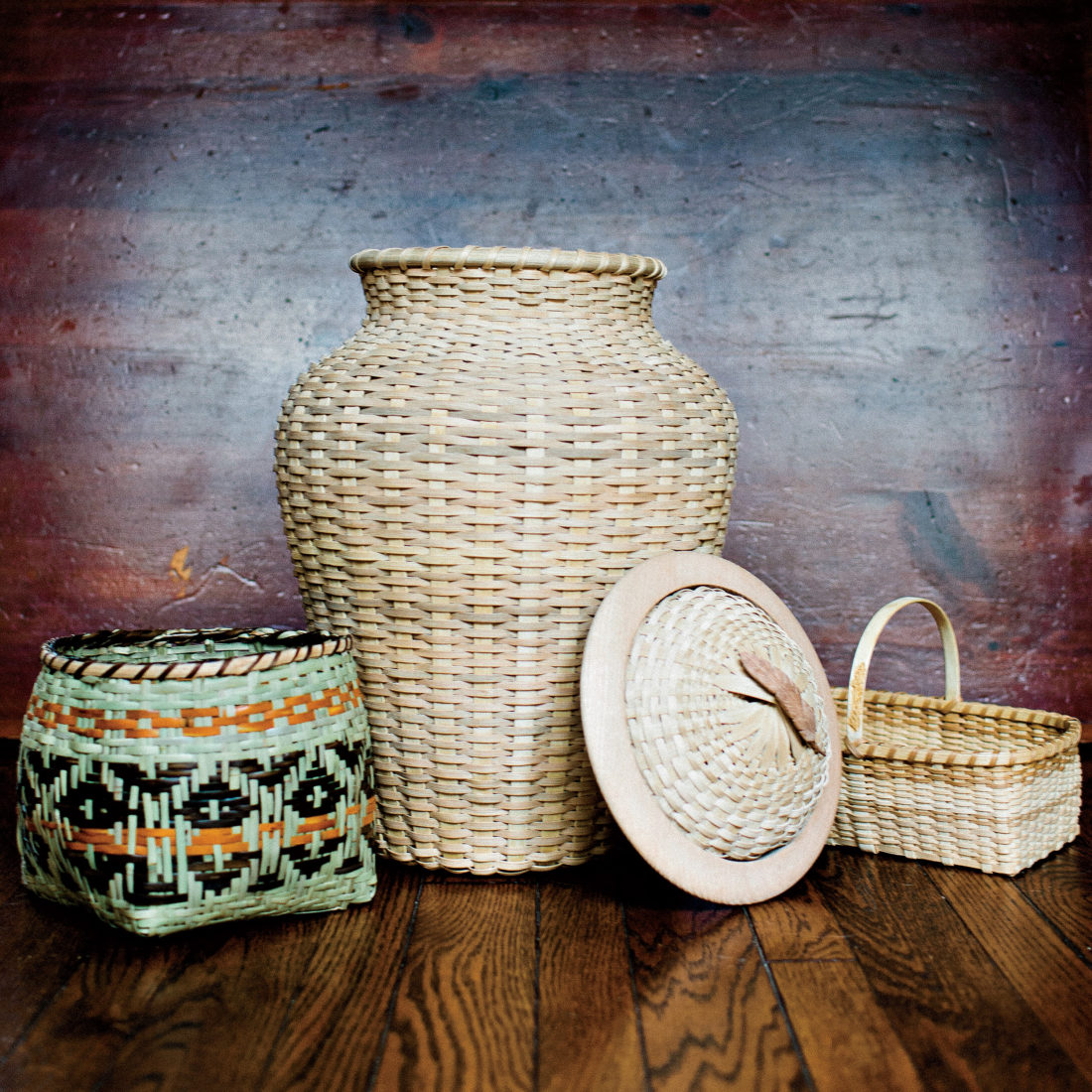“I was kinda lost,” says Billy Ray Sims, recalling the juncture in his life that started him down a path of skill and artistry he’d never foreseen. It was 1993, and the East Tennessee native and former editor at Wooden Boat magazine had just wrapped up the voyage of a lifetime, a year of cruising the waters of Bermuda and the Caribbean on a gorgeous gaff-rigged cutter he had rebuilt. After the journey, and his marriage, ended, Sims was living aboard the sailboat docked near Charleston, South Carolina, feeling adrift and seeking a way to connect to his new surroundings. He gave surfing a try, and on a lark took a class in sweetgrass basketry at a nearby community center.
“The teacher didn’t take me too seriously at first—this young white guy showing up to learn Gullah basket making,” Sims says. “But I just kept coming back, and over time we became friends, and the weaving kept me entertained at night, alone on my boat on the Stono River.” A few years later, when another job brought him to Birmingham, Alabama, he brought his fascination with and growing skill at the centuries-old craft of basket making along with him.

Photo: Caleb Chancey
Sims at work on his shaving table
Although Sims still dabbles in the Lowcountry’s signature sweetgrass and other materials, he now specializes in exquisitely woven baskets made of Alabama’s native white oak, revising old shapes and putting his spin on a longtime Southern Highlands tradition. Harking back to a time before our paper-or-plastic era, the ornamental forms of Sims’s baskets originate in earthbound function: fish creels, Appalachian egg baskets, potato baskets, shallow sweetgrass fanners once used on Southern rice plantations, rugged bushels for gathering apples or corn. They sell for $100 to $2,000, most of them made on commission. Two of them will appear in an exhibit of American-made baskets at the Smithsonian American Art Museum’s Renwick Gallery, in Washington, D.C., beginning October 4 and running through January 12.

Photo: Caleb Chancey
An assortment of Sims’s tools used for shaping
Working in an art form many of whose finest practitioners are elderly women, Sims, who is fifty-nine, sets himself apart in two ways. First, he harvests his own materials. “I spend the majority of my time in the woods, looking for the perfect tree,” he says. The ideal young white oak has grown up straight and tall, competing under a canopy of bigger trees, with no lower limbs and as a result no knots. He fells each tree with a handsaw, then splits the trunk lengthwise repeatedly—in halves, then quarters, then eighths—with an ax, a mallet, and wedges. Next, he separates long strips from the heart of the wood, using a knife and his hands, guided by the tree’s growth rings.
“There’s no machine capable of breaking it down to those kind of splits,” he explains. “It’s all about feel.” Only when those strips are whittled and polished and sanded down does the actual weaving begin. Sims makes the basket’s handle and ribs first, then painstakingly weaves the oak strips over and under until the basket is filled in, like a potter shaping a vessel—“a very time-consuming process,” he says. “There’s nothing meditative about it. I’m intense. I really go after it. It’s your will against nature, and sometimes nature prevails. It’s humbling.”
Sims has also brought another distinctive touch to basket making: He’s trying to extend the life of the ancient craft by nudging it into the digital age. He’s interviewing and shooting digital footage of several basket makers for the introductory video for the Smithsonian exhibit. He has also recently completed an e-book, collaborating with one of his mentors, a Kentucky octogenarian named Leona Waddell. “We’re on the verge of being able to preserve this in a way that wasn’t available before,” he says.

Photo: Caleb Chancey
Over and Under
The hoop and handle of a white oak egg basket in its early stages
Still, the essence of the process remains unmistakably old-school. Basket makers often do their work outdoors, in the shade of a tree, and frequently in the company of fellow weavers. “Making baskets helps me stay balanced, and real, and connected to the earth, literally,” Sims says. “I feel like I’m connected to old souls. To be honest with you, I’m not sure I’m a man of this time.”
>For more information on Sim’s baskets, visit billyraysimsbaskets.com.








